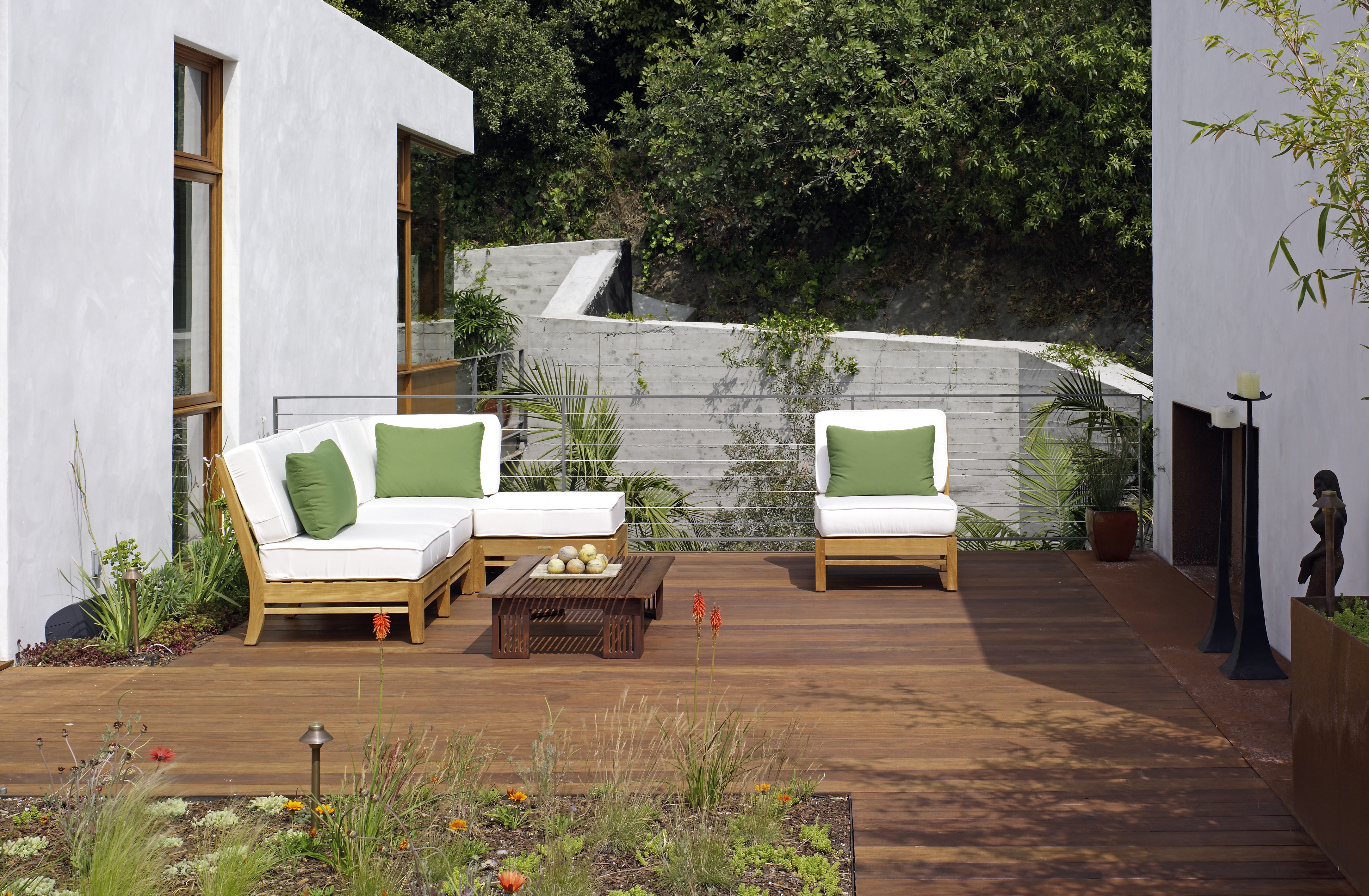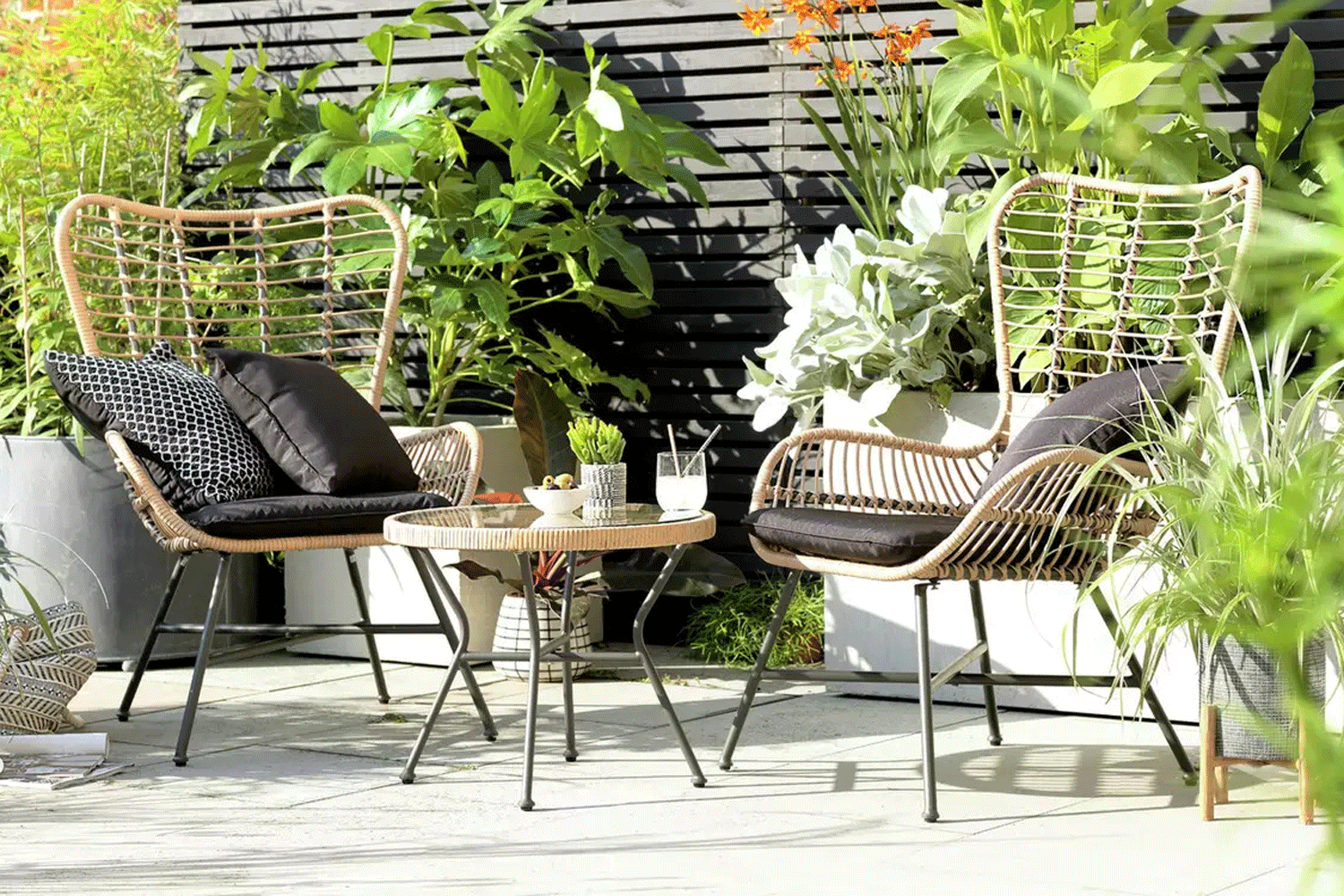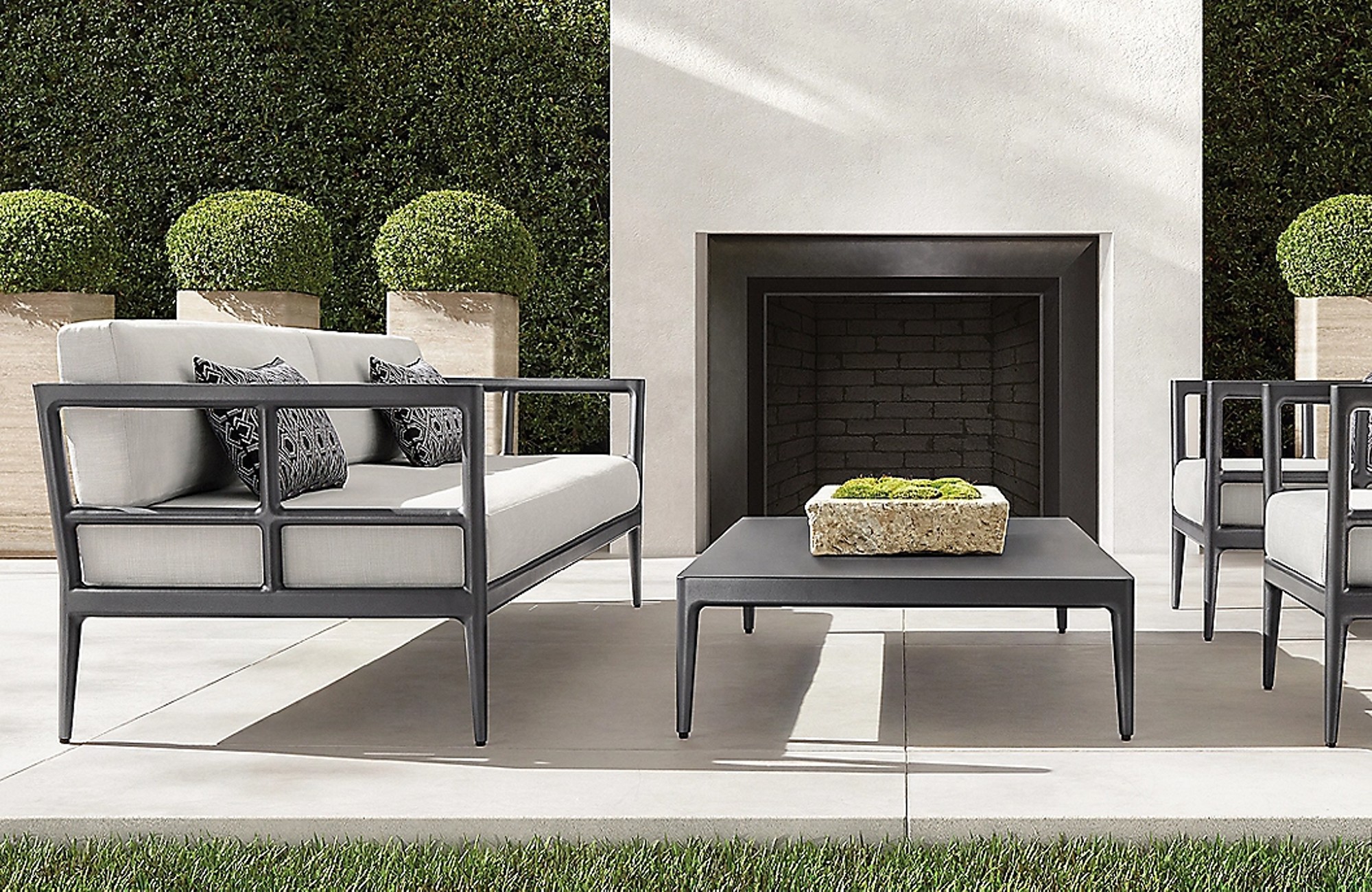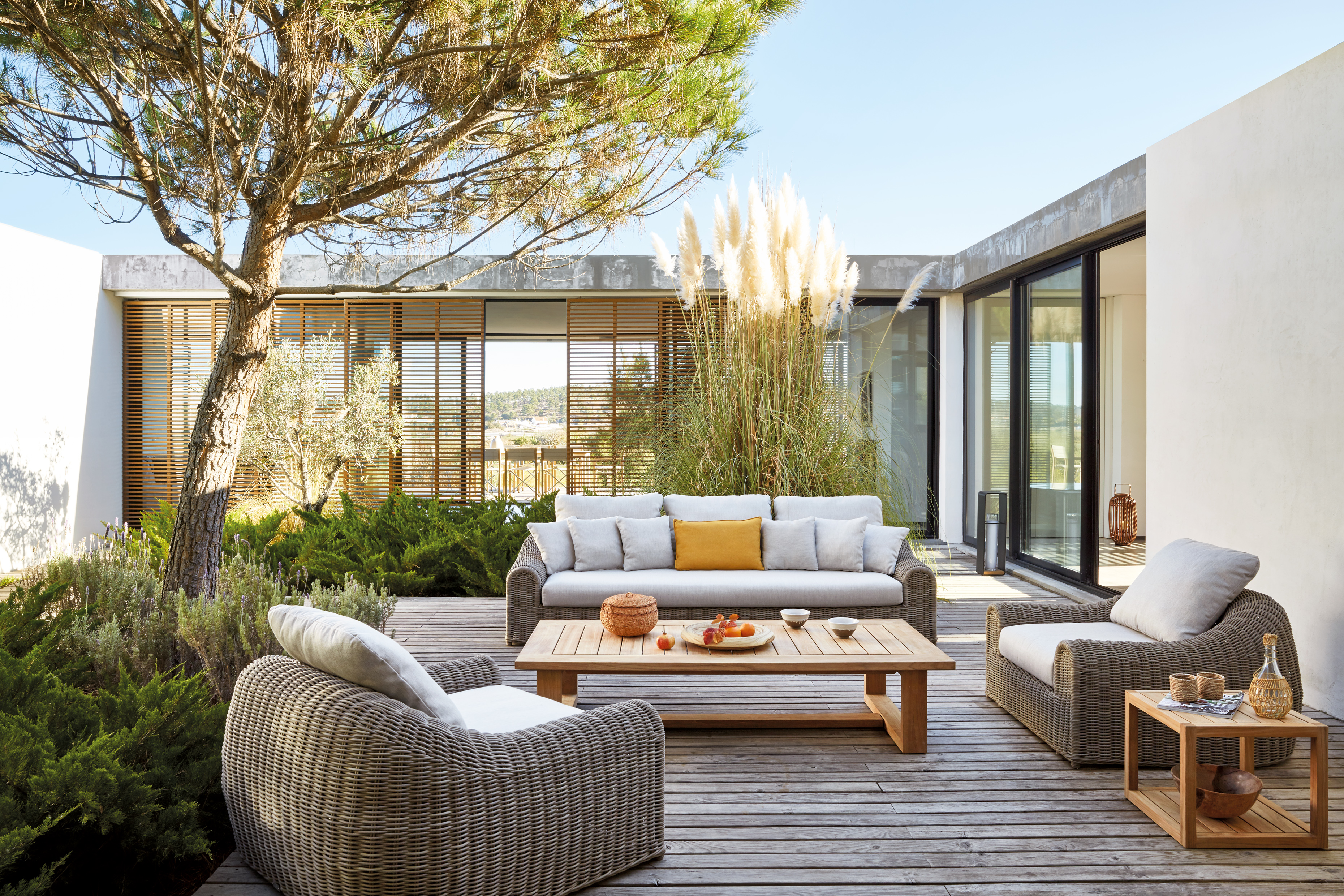
Distressed cast iron bench, vintage terracotta pots, the patina of a rusted watering can - we love a shabby chic backyard as much as the next person. What we don't love, however, is faded patio furniture that looks unloved and unkempt, resulting in a garden that looks neglected.
It's easy to think your outdoor furniture is invincible - it's designed to live outside, after all - but if you want to keep it looking its best, you'll need to maintain it. Rain, wind, and frost can cause their own problems, but one of your worst enemies when it comes to the upkeep of garden furniture is the sun. Since we mostly use it through the summer it's left to the peril of intense UV rays, with fading being a common problem.
The thing is, patio furniture doesn't come cheap so if you want to keep it looking its best for more than a single summer, you'll want to know about the various way to stop it from fading. To help you, we asked some experts in garden furniture for their insights on keeping modern outdoor furniture looking fresh. Here's what they had to say.
1. Store it properly

It might sound obvious, but the first step to well-kept patio furniture is storing it properly when not in use. Although we typically keep our garden seating outside through the whole summer, the sun can still be pretty powerful throughout the rest of the year too, so, if you're not using it through autumn and winter, be sure to store it away.
'One way to do this is to use a protective cover when you’re not using it,' explains Raf Michalowski, interior designer and founder of Meble Furniture. Most modern furniture will come with a cover of some sort, but if you don't have one you could use a plain old tarp or a large general-purpose furniture cover like this one, from Amazon, which comes in different sizes. The benefit of these is they'll also protect from rain and frost, too.
It's worth noting, however, that furniture covers aren't always foolproof. As Ben Harvey, founder and CEO of Patio Productions, explains, 'they can fly off, water can still get in, and if they rip, they will be exposed to the sun'. Alternatively, you can always store your outdoor furniture in a garage or shed if you have one.
2. Apply a sealant

A physical cover is all well and good when your outdoor furniture isn't in use, but you'll need some form of protection during the long summer months, too, and failing to offer any is one of the worst outdoor furniture mistakes.
One way to do this is with a sealant. 'For those metal or plastic comrades, we rely on a UV-resistant paint or finishing coat to keep their charm intact for ages,' explains Wendy Wang, owner of F&J Outdoors. 'With our wooden buddies, you can count on UV-resistant sealants applied annually, like a yearly vaccine shot, to keep them in prime health.'
A lot of metal outdoor furniture, such as aluminum or steel, already comes with a powder-coated finish for a layer of protection from the sun. Wooden furniture, however, will require more regular upkeep with a stain and sealant formula. 'A sealant is also designed to help not absorb excess moisture,' adds Ben. 'You only need to apply it once or twice a year, and you can leave your furniture out in the sun without it being impacted by the UV rays.'
According to Raf, metal furniture should be treated with a protective coating or finish every few years to keep it from fading. 'For plastic furniture, you can use a specialized plastic cleaner to keep it looking its best,' he adds. We like this one, available at Amazon.
3. Look out for solution-dyed fabric

By far one of the worst types of outdoor furniture for fading is upholstered fabrics. Just as they would inside your home, colored textiles are far more prone to fading when exposed to the elements.
'For our fabric friends, trust in solution-dyed fabrics and offer them the cozy comfort of outdoor furniture covers,' says Wendy. 'They're a great defense against the brutal sun, merciless rain, invasive dust, and piercing snow.' You'll need to ensure you look out for these specially developed fabrics from the best outdoor furniture brands, such as Sunbrella brand. For a regular refresh alongside this, you can also buy UV aerosol sprays which act like a sun lotion for soft materials.
'If in doubt, it’s best to choose light or more neutral tones for seat cushions as if they do fade, it will be much less noticeable,' adds Ben.
4. Clean regularly

Last but not least, don't underestimate the wonders some general maintenance can do for your outdoor furniture.
'Whatever the material of choice, you can extend your outdoor furniture's lifespan by bestowing some TLC with routine care and upkeep,' Wendy explains. 'Simple deeds like rinsing off harsh debris and grime, cleaning with the right sidekicks (cleaners), and tucking them into safe storage during harsh weather will work miracles.' Cleaning outdoor furniture with salt is also a super cheap, easy, and effective method that experts love.
What type of outdoor furniture is most likely to fade?
Any type of material will eventually fade if left in the sun in your backyard, but some will fade more quickly than others. 'Wood is especially vulnerable to the effects of sunlight because the ultraviolet (UV) rays can cause the wood to break down and fade,' says Raf. 'Metal is more resilient, but the sun can still cause fading over time.'
According to Wendy, though, fabric or natural materials will fade the fastest of all. 'This means furniture adorned with lively dyed fabrics and make materials like your good old wood and wicker,' she says. 'Leave these fellas unshielded under the sun, and you're signing their death warrant sooner than expected.'

What type of outdoor furniture is least likely to fade?
By contrast, plastic materials will look brighter the longest in your backyard, making it a great low-maintenance option. 'All-weather resin wicker is your knight in shining armor,' says Wendy. 'Yes, it's like shelling out dough for a pricey spa membership, but you're buying peace of mind. Look it in the eye, it's a smart investment.' It's also one of the types of outdoor furniture that lasts the longest, so general longevity comes as a promise, too.







